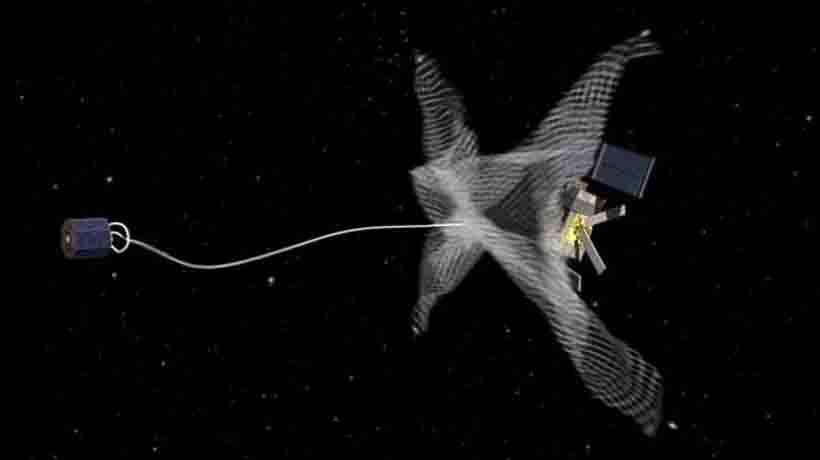Trending Now
- 830 voters names go missing in Kavundampalayam constituency
- If BJP comes to power we shall consider bringing back electoral bonds: Nirmala Sitaraman
- Monitoring at check posts between Kerala and TN intensified as bird flu gets virulent in Kerala
Education
This spacecraft will clean up space debris with its harpoon: About RemoveDebris experiment
![]() April 11, 2018
April 11, 2018
We have long been talking about the space junk that’s floating up in the skies and the threat it poses to our satellites, spacecrafts and especially the International Space Station.
To tackle this issue, a team led by the University of Surrey, UK designed a spacecraft named RemoveDebris that has been launched into space to take care of the accumulated debris. The spacecraft bears three technologies for the clean-up procedure: a harpoon, a net, and a drag sail.
REMOVEDEBRIS EXPERIMENT ASPIRES TO CLEAN SPACE DEBRIS
1.The spacecraft has been developed by a number of companies together including the European Space Agency (ESA) which aims to fix the current situation of space debris since the concern has been bothering everyone for a long time
2.The spacecraft is about the size of a washing machine and weighs 100 kilograms
3.It carries three types of technologies for space-debris capture and active deorbiting — a harpoon capture, a net capture, a LIDAR system that optically guides its vision and space debris targets, and a drag sail that will also help its re-entry into the Earth’s atmosphere
4.Once in orbit, the satellite will deploy two miniature satellites (CubeSats) as artificial debris targets to demonstrate the working of some of the technologies — due to legal issues that don’t allow the manipulation of space objects that belong to someone else, even if the objects are no longer functional
5.The platform was launched to the International Space Station on a SpaceX Dragon capsule in early April
HOW THE SPACE DEBRIS-CLEANING TECHNOLOGIES WILL WORK
1.The space debris harpoon, built by Airbus Defence and Space, UK, will be later fired into a fixed target that will be extended from the main satellite on a boom
2.After it completes the harpoon, net and lidar experiments, the RemoveDebris spacecraft will deploy the drag sail that will speed up its deorbiting process
3.Once the spacecraft reaches a safe distance from the space station, it will eject the two CubeSats
4.After that, the chaser spacecraft will deploy the net, aiming to capture the CubeSats which act like mock space debris
Jason Forshaw, the project’s manager told Space.com:
The absolute maximum for which it stays up there would be one year
“These things at low altitudes do come down very quickly. We are not going to contribute to any further space debris,” he added.
Forshaw says that the team is testing the space debris-removal technologies in this demonstration mission, and they want to see whether they work or not. “If they work, then that would be fantastic, and then these technologies could be used on future missions”, he says.
The astronauts are expected to start testing the spacecraft in few weeks
WHAT AFTER THE TESTS?
1.Once all the preliminary test are complete, the spacecraft will be sent towards the Japanese Kibo Lab airlock from where a robotic arm at the Japanese module will take it outside the ISS for further space debris-removal
2.The robotic arm will ensure that the spacecraft is deployed at the right time and velocity so that it is far from the ISS failing which, it can cause serious effects on the ISS
3.Once the satellite is deployed, it will stay dormant for few days and then, the bootup procedure will be initiated
PREVIOUS ATTEMPTS TO CLEAN SPACE JUNK
There have been many efforts to clean up space debris in the past like the DeOrbit mission, CleanSpace One, Japanese Aerospace Exploration Agency’s electrodynamic tether, Texas A&M University’s Sling-Sat Space Sweeper, and the ElectroDynamic Debris Eliminator.
























